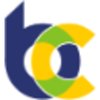Senior Associate 1
60+ Senior Associate 1 Interview Questions and Answers

Asked in PwC

Q. How do you audit assets in a multi-location audit?
Audit of assets in multi-location audit involves planning, coordination, and communication.
Plan the audit approach and scope for each location
Coordinate with local teams and assign responsibilities
Ensure consistency in audit procedures and documentation
Communicate effectively with all stakeholders
Use technology to streamline the process
Perform physical verification of assets at each location
Reconcile the asset records with the financial statements
Identify and report any discr...read more

Asked in Publicis Sapient

Q. Why is risk management important, and how would you communicate its significance to stakeholders? Give examples.
Risk management is crucial for identifying, assessing, and mitigating potential threats to ensure project success and stakeholder confidence.
Identifying Risks: Effective risk management helps in identifying potential risks early, such as market fluctuations that could impact project budgets.
Mitigating Impact: By assessing risks, organizations can develop strategies to mitigate their impact, like creating contingency plans for supply chain disruptions.
Enhancing Decision-Making...read more
Senior Associate 1 Interview Questions and Answers for Freshers

Asked in Apex Group

Q. What are position and cash reconciliation, and what are the position breaks that don't affect cash reconciliation and vice versa?
Position and cash reconciliation involves comparing the positions and cash balances to ensure accuracy.
Position reconciliation involves comparing the securities held in the portfolio to the records of the custodian or broker.
Cash reconciliation involves comparing the cash balances in the portfolio to the records of the custodian or bank.
Position breaks occur when there are discrepancies in the securities held, but the cash balance is correct.
Cash breaks occur when there are d...read more

Asked in Deutsche Bank

Q. What do you know about IFRS 9?
IFRS 9 is a financial reporting standard for accounting of financial instruments. Deferred tax is an accounting concept that deals with the timing of tax payments. Accounting entries are the records of financial transactions. Derivatives are financial instruments that derive their value from an underlying asset.
IFRS 9 is a set of guidelines for accounting of financial instruments
Deferred tax is an accounting concept that deals with the timing of tax payments
Accounting entries...read more

Asked in KPMG India

Q. How to audit cash, prepare reconciliation, A/R, PPE assertions type of question asked
Auditing cash, preparing reconciliations, and assessing A/R and PPE assertions.
Start by obtaining the cash balance from the general ledger and comparing it to the bank statement.
Perform bank reconciliations to ensure all transactions are accurately recorded.
For accounts receivable, confirm balances with customers and assess the allowance for doubtful accounts.
For property, plant, and equipment (PPE), review the depreciation method used and ensure assets are properly valued.
Te...read more

Asked in Publicis Sapient

Q. Can you provide an example of a scenario in which you added value?
In my previous role, I streamlined a process that significantly improved team efficiency and reduced project turnaround time.
Identified Bottlenecks: I analyzed our project workflow and discovered that manual data entry was causing delays.
Implemented Automation: I introduced an automated tool that reduced data entry time by 50%, allowing the team to focus on more critical tasks.
Enhanced Collaboration: By facilitating better communication between departments, I ensured that eve...read more
Senior Associate 1 Jobs




Asked in Publicis Sapient

Q. How do you manage conflicts, and can you provide a few examples?
Effective conflict management involves communication, empathy, and problem-solving to resolve disagreements constructively.
Active Listening: I ensure all parties feel heard by summarizing their points before responding. For example, during a team project, I mediated a disagreement by allowing each member to express their concerns fully.
Empathy: I try to understand the perspectives of others. In a previous role, I resolved a conflict between two colleagues by acknowledging the...read more

Asked in SustainEdge Global

Q. What are Deferred Tax Assets (DTA) and Deferred Tax Liabilities (DTL)? What is your general knowledge about taxes?
DTA (Deferred Tax Asset) and DTL (Deferred Tax Liability) are accounting concepts related to timing differences in tax payments.
DTA arises when taxes paid exceed taxes owed, e.g., tax loss carryforwards.
DTL occurs when taxes owed exceed taxes paid, e.g., depreciation differences.
Both DTA and DTL are recorded on the balance sheet and affect future tax payments.
Example of DTA: A company incurs a loss this year, allowing it to reduce future taxable income.
Example of DTL: A compa...read more
Share interview questions and help millions of jobseekers 🌟


Asked in Blue Consulting

Q. What is the rate of Tax Deducted at Source (TDS) on rent for a building?
TDS on rent for buildings is typically 10% for individuals and 40% for companies, applicable if rent exceeds ₹2.4 lakh annually.
TDS rate on rent paid to individuals is 10% if the annual rent exceeds ₹2.4 lakh.
For companies, the TDS rate is 40% on rent payments.
If the landlord does not provide a PAN, TDS is deducted at the maximum marginal rate.
Example: If monthly rent is ₹25,000, annual rent is ₹3 lakh, TDS would be ₹30,000 (10% of ₹3 lakh).
TDS must be deposited with the gove...read more

Asked in Wipro

Q. What do you know about RCM & Denial Management?
RCM & Denial Management are processes used in healthcare to ensure proper reimbursement and reduce claim denials.
RCM stands for Revenue Cycle Management and involves managing the financial aspects of healthcare services, from patient registration to claim submission and payment.
Denial Management is the process of identifying and resolving claim denials, which can occur for various reasons such as incorrect coding or missing information.
Effective RCM and Denial Management can ...read more

Asked in Capgemini

Q. What is the process of invoice processing?
Invoice processing involves receiving, reviewing, and approving invoices for payment.
Invoices are received from vendors or suppliers
Invoices are reviewed for accuracy and completeness
Invoices are approved for payment based on company policies and procedures
Payment is made to the vendor or supplier
Invoices are recorded in the company's accounting system

Asked in Accenture

Q. How do you compare two flat files in GDE?
Comparing 2 flat files in GDE involves using the Join component and specifying the keys to match.
Use the Join component in GDE to compare 2 flat files
Specify the keys to match in the Join component
Choose the type of join (inner, outer, left, right) based on the comparison needed

Asked in Valueonshore Advisors

Q. Tell me about Revenue Assurance
Revenue Assurance is the process of ensuring that a company's revenue is maximized and losses are minimized.
It involves identifying revenue leakages and implementing controls to prevent them.
It also includes monitoring revenue streams and ensuring that they are accurately recorded.
Revenue Assurance is important for telecom companies, banks, and other businesses that rely heavily on revenue streams.
Examples of revenue leakages include billing errors, fraud, and uncollected rev...read more

Asked in SustainEdge Global

Q. How would you verify assets and liabilities?
Assets and liabilities can be verified through various methods.
Verify assets by checking bank statements, physical inventory, and property deeds.
Verify liabilities by checking loan agreements, credit card statements, and accounts payable.
Compare the total assets and liabilities to ensure they balance.
Perform a reconciliation of the accounts to identify any discrepancies.
Use financial ratios to analyze the company's financial health.

Asked in Accenture

Q. 1. Abinitio components used by you till now
I have used various Abinitio components such as Reformat, Join, Partition, Dedup, Sort, Normalize, etc.
Reformat
Join
Partition
Dedup
Sort
Normalize

Asked in PwC

Q. How many filter conditions can be used in a Calculate function?
The Calculate function in Power BI can use up to 2 filter conditions.
The Calculate function can have a maximum of 2 filter conditions specified within it.
Filter conditions can be used to modify the context in which calculations are performed.
For example, Calculate(SUM(Sales), ProductCategory = 'Electronics', Year = 2021) uses 2 filter conditions.

Asked in WNS Denali

Q. What is accounts payable What is p2p process How to manage vendors effectively
Accounts payable is the amount a company owes to its suppliers for goods and services purchased on credit.
Accounts payable is a liability on the balance sheet representing the amount owed to suppliers.
The accounts payable process involves receiving invoices from vendors, verifying the accuracy of the invoices, and making payments.
P2P (Procure-to-Pay) process is the end-to-end process of purchasing goods and services, from requisition to payment.
Managing vendors effectively in...read more

Asked in Berar Finance

Q. What is the difference between internal and external audits?
Internal audit is an independent review of a company's operations, while external audit is a review by an independent third party.
Internal audit is conducted by the company's own employees
External audit is conducted by an independent third party
Internal audit focuses on evaluating and improving the effectiveness of internal controls and risk management processes
External audit focuses on providing an opinion on the accuracy and completeness of financial statements
Internal audi...read more

Asked in Flipkart

Q. What is supply chain management? Give an example.
Supply chain management involves overseeing the flow of goods and services from the initial production stage to the final delivery to the customer.
Involves planning, implementing, and controlling the efficient flow of goods and services
Includes activities such as sourcing, procurement, production, logistics, and distribution
Focuses on optimizing processes to minimize costs and maximize customer satisfaction
Example: A company managing its supply chain to ensure timely delivery...read more

Asked in Capgemini

Q. What is accrual,deffrels, name of accounts
Accrual refers to the recognition of revenues and expenses when they are incurred, regardless of when cash is exchanged.
Accrual accounting matches revenues with expenses in the same accounting period
Accruals are recorded as adjusting journal entries at the end of each accounting period
Common accruals include accrued salaries, accrued interest, and accrued taxes
Accruals help provide a more accurate representation of a company's financial position and performance

Asked in Holcim

Q. What are the SAP codes used in the OTC process?
SAP codes are used in the Order to Cash (OTC) process to identify various stages and transactions within the process.
SAP codes are alphanumeric codes assigned to different stages and transactions in the OTC process.
They help in tracking and managing orders, invoices, deliveries, and payments within SAP systems.
Examples of SAP codes in OTC process include VA01 for creating sales order, VF01 for creating invoice, and VL01N for creating delivery.
Asked in We17

Q. How many types of filters are there in Power BI?
There are three main types of filters in Power BI: visual-level filters, page-level filters, and report-level filters.
Visual-level filters apply only to the specific visual they are set on
Page-level filters apply to all visuals on a specific page
Report-level filters apply to all visuals in the entire report

Asked in PwC

Q. How do you test investment, capital, and revenue?
Testing investment, capital, and revenue involves analyzing financial metrics and performance indicators to ensure sound financial health.
Conduct a financial analysis to assess return on investment (ROI). For example, calculate ROI by dividing net profit by total investment.
Perform a break-even analysis to determine when an investment will start generating profit. This helps in understanding capital efficiency.
Use revenue forecasting models to predict future revenue based on ...read more

Asked in Blue Consulting

Q. What is the due date for filing GSTR-1?
GSTR-1 is a monthly or quarterly return for reporting outward supplies, with specific due dates based on the taxpayer's turnover.
GSTR-1 is due on the 11th of the following month for monthly filers.
Quarterly filers must submit GSTR-1 by the 13th of the month following the quarter.
For example, for January, the due date is February 11 for monthly filers.
For the quarter ending March, the due date is April 13 for quarterly filers.
Asked in Practus advisors

Q. What is the difference between a general ledger and a sub-ledger?
General ledger is a complete record of all financial transactions of a company, while sub ledger contains details of specific accounts.
General ledger summarizes all financial transactions in one place, while sub ledger provides detailed information for specific accounts.
General ledger is used for overall financial reporting, while sub ledger is used for specific account analysis.
Examples of sub ledgers include accounts receivable, accounts payable, and inventory.

Asked in KPMG Global Services

Q. What is risk. How to handle
Risk is the potential of gaining or losing something of value. Handling risk involves identifying, assessing, and managing potential risks.
Risk is the uncertainty of outcome, whether positive or negative.
Identify and assess potential risks by analyzing the likelihood and impact of each risk.
Manage risks by developing strategies to mitigate, transfer, or accept them.
Examples of risk management strategies include insurance, diversification, and contingency planning.

Asked in Wipro

Q. What are POS 11, 21, and 22?
POS 11, 21, 22 are Point of Sale (POS) transaction codes used in retail and business environments.
POS 11 refers to a regular sale transaction.
POS 21 refers to a sale transaction with a credit card payment.
POS 22 refers to a sale transaction with a debit card payment.

Asked in PwC

Q. Explain the structure of Schedule M-3 of Form 1065.
M3 of the 1065 refers to the third member's capital account in a partnership tax return form.
M3 is a section in Form 1065 where the partnership reports the tax basis capital accounts of its partners.
It includes adjustments for income, deductions, contributions, distributions, and other items that affect the partners' tax basis.
The M3 schedule reconciles the partners' capital accounts from the beginning to the end of the tax year.
Partnerships use M3 to track the tax consequenc...read more

Asked in Wipro

Q. What is inclusive bundling?
Inclusive bundling refers to the practice of offering a package deal that includes all necessary components for a particular service or product.
Inclusive bundling simplifies the purchasing process for customers by offering a comprehensive package deal.
It can also increase customer loyalty and satisfaction by providing a convenient and cost-effective solution.
Examples of inclusive bundling include a phone plan that includes unlimited data, talk, and text, or a vacation package...read more

Asked in Accenture

Q. What is SCD? Explain.
SCD stands for Sickle Cell Disease, a genetic blood disorder affecting hemoglobin.
SCD is a genetic blood disorder where red blood cells become sickle-shaped and have difficulty carrying oxygen.
It is caused by a mutation in the hemoglobin gene.
Symptoms include anemia, pain, organ damage, and increased risk of infections.
SCD is inherited in an autosomal recessive pattern.
Treatment includes medications, blood transfusions, and sometimes bone marrow transplants.
Interview Questions of Similar Designations
Interview Experiences of Popular Companies






Calculate your in-hand salary
Confused about how your in-hand salary is calculated? Enter your annual salary (CTC) and get your in-hand salary


Reviews
Interviews
Salaries
Users










